It is extremely rare for an Indian Prime Minister to make an address to the nation. Usually, when he (or she) does, something seriously is amiss. The last time, I recall, a Prime Minister making “an address to the nation” was in 2014, where a serious looking PM Manmohan Singh bid adieu to the nation. Thus, a PM’s address is a bad omen. Not surprisingly then, when PM Narendra Modi did the same on 8th November, you knew something was up, it was his first “address” in over 2 years in office. And sure it was. A 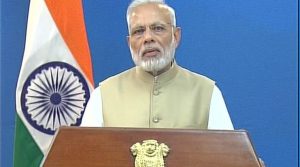 dour looking PM then in the 20 mins made an announcement that sent the whole country in a tizzy. He announced a war on black money with almost immediate demonetization of 500 & 1000 Rupee notes. “The arrangement of buying and selling through existing 500 and 1000 notes will not be available. These will be just worthless piece of paper”.
dour looking PM then in the 20 mins made an announcement that sent the whole country in a tizzy. He announced a war on black money with almost immediate demonetization of 500 & 1000 Rupee notes. “The arrangement of buying and selling through existing 500 and 1000 notes will not be available. These will be just worthless piece of paper”.
Never before in the history of modern world, 86% of currency in circulation was turned into worthless in a matter of 2-3 hours. And this was done with absolute planning. The decision came out at 9 pm, and the 500 & 1000 notes ceased being a legal tender at 11.59 pm. In this time, the black money hoarders could do precious little to convert it into another assets like gold or other precious metal. While the government would circulate a completely new (500 & 2000) denomination notes, the banks would be closed for a day, there would be limits on withdrawals, and so many other dos and donts. Come to think of it, there was hardly another way to bring about such demonetization, it has to be hard and it had to be sudden.
Immediately after the announcement, people hit the streets trying to exchange the ubiquitous 500 and 1000 bucks, by making small purchases or things like that. But as the 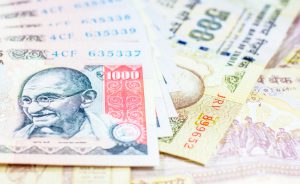 word spread, the exchange stalled. No one was ready to touch the currency with a barge pole. Shopkeeperrs would smile indulgently on being offered these notes. Outside ATMs, there was a huge queue of people, withdrawing 400 bucks at a time. Ditto, long queues at petrol pumps, as people tried to use the notes to tank up their vehicles. Even on the television, you could all these people standing outside ATMs and petrol pumps trying to lay their hands on whatever 100 or 50 they could lay their hands on. People across the board were confused, irritated, and even angry at the way their Tuesday night had been laid waste. But yet, almost all were in agreement that it was a bold, necessary and welcome move by the government. There was hardly a soul on the road, who did not support or complement PM Modi on this move.
word spread, the exchange stalled. No one was ready to touch the currency with a barge pole. Shopkeeperrs would smile indulgently on being offered these notes. Outside ATMs, there was a huge queue of people, withdrawing 400 bucks at a time. Ditto, long queues at petrol pumps, as people tried to use the notes to tank up their vehicles. Even on the television, you could all these people standing outside ATMs and petrol pumps trying to lay their hands on whatever 100 or 50 they could lay their hands on. People across the board were confused, irritated, and even angry at the way their Tuesday night had been laid waste. But yet, almost all were in agreement that it was a bold, necessary and welcome move by the government. There was hardly a soul on the road, who did not support or complement PM Modi on this move.
So how is that when so many people were troubled and disconcerted with a policy action, yet they seemed to be happy and glad for it?
It can be explained by a German term that spells as Schadenfreude — a German term that can be translated as: one person’s delight in another’s misfortune. Thus, while, we the common people were troubled, there was much solace in their sheer trouble the super-rich and the mega-rich would have to go through by such an action.
Post liberalization in the 90s, there has been a virtual boom in the economy. Markets have expanded, companies have come, and so on. But the biggest boom that has happened is in the black economy, so the real estate sector has shot up to stratospheric levels, the stock markets are in a tizzy, gold is trading at a crazy peak. Yet, this expansion and growth has only enriched a select few, a very small group of people — businessmen, politician, real estate barons. Power and money is concentrated with this select band, who cohabit in 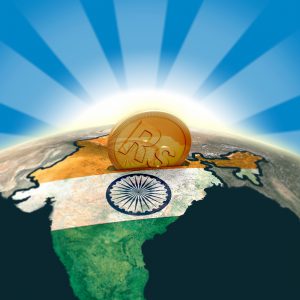 camaraderie. And the gulf between this set of rich and powerful, and the average Indian has widened with each passing day. The result, multiple Indias exist concurrently, an India where the richest home in the world is built, and an India where the biggest slum of Asia exists too. For a far long time, the Indians from the latter have looked on enviously at the Indians from the former, trying to make a transition.
camaraderie. And the gulf between this set of rich and powerful, and the average Indian has widened with each passing day. The result, multiple Indias exist concurrently, an India where the richest home in the world is built, and an India where the biggest slum of Asia exists too. For a far long time, the Indians from the latter have looked on enviously at the Indians from the former, trying to make a transition.
According to estimates, India’s black economy could now be nearly three-quarters the size of its reported Gross Domestic Product, which will be around $1.6 trillion (of $2.1 trillion). While a big stash of this money is parked in accounts in Lichtenstein or Switzerland, a significant amount continues to exist in homes, offices and warehouses. This huge pile is used to get “work done”, be it fighting elections, getting contracts, doling advances, organizing parties, or just about anything else. Sadly, the common man is not immune to the impact from this black economy. Take the case of real estate, where people have to pay through their nose and sell their family heirlooms just to arrange the “black” component of their favored homes. It is because of this black money, that prices have inflated to crazy. No wonder, an average Indian is disgusted and depressed in such a scenario. Considering the fact that the club of these rich profiteers is a powerful one, there is little that anyone can do about it. I mean, we could just look on in amazement as an  amnesty scheme by the government would net in 65,000 crores. The scale and size was much bigger, and no one seemed to have a solution for it. That was till, 8th November, 2016, when PM Modi made his first historic “address to the nation”.
amnesty scheme by the government would net in 65,000 crores. The scale and size was much bigger, and no one seemed to have a solution for it. That was till, 8th November, 2016, when PM Modi made his first historic “address to the nation”.
Frankly, this is not the first time when high denomination currency notes were being demonetized. The first such exercise was done in back in January 1946, where 1,000 & 10,000 banknotes were banned. This was the first exercise followed up by another demonetization by the Janata Government under Morarji Desai wherein banknotes of 1000, 5000 and 10000 that were in circulation were demonetized in January 1978.
And then India is not the only country to demonetize. Across the worlds governments have scrapped high value currency at different times to achieve certain objectives. In 1969, US President Nixon discontinued $500 bill to combat money laundering by organized crime. As recent as in 2000, Canada got rid of its $1,000 bills, meanwhile Singapore dumped the $10,000 bills to rein in the hoarding and misuse. In 2010, UK had asked its banks to stop handling €500 notes after a government study showed that “they were used mainly by 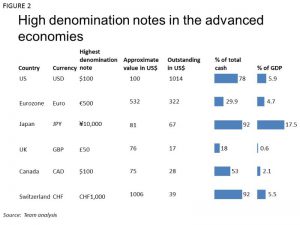 criminals”. In fact, there are calls in the UK to scrap the £50 note. And then most recently, the European Central Bank has decided to stop printing Euro 500 bank notes, popularly known as ‘Bin Laden notes’, because of its association with money laundering and terror financing. Do you know what is the highest currency in the US? It is the $100 bill.
criminals”. In fact, there are calls in the UK to scrap the £50 note. And then most recently, the European Central Bank has decided to stop printing Euro 500 bank notes, popularly known as ‘Bin Laden notes’, because of its association with money laundering and terror financing. Do you know what is the highest currency in the US? It is the $100 bill.
But not everyone is anti-big currency, the Swiss still seem to be in love with their massive CHF 1,000 note.
So, is just high denomination good or bad for the economy? According to Peter Sands, former chief executive at Standard Chartered Bank, banning high denomination can have multiple benefits to the economy at large. In a paper published at the Harvard Kennedy School, he states that “by eliminating high denomination, high value notes we would make life harder for those pursuing tax evasion, financial crime, terrorist finance and corruption”.
In fact, these are reasons that even PM Modi harped upon when he gave the address. He dwelt upon how terror networks were using fake currency (estimated to be as high as 5000 crore in high denomination) to launch terror attacks in the country. By this devaluation, they would be caught in a grind, as they will be sitting on a stash that is worth much less than paper its printed on.
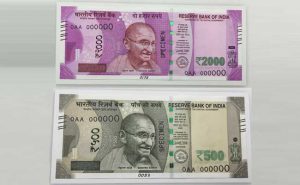 There are plenty of conspiracy theories doing the rounds on Whatsapp et al, about how this demonetization is a political stunt, or a step done for election in UP and Punjab, there is also the messages of how BJP MPs have converted their money, or why this time the whole exercise will flop because of ill-designed plans, or the fact that 2000 buck note will only lead to greater hoarding.
There are plenty of conspiracy theories doing the rounds on Whatsapp et al, about how this demonetization is a political stunt, or a step done for election in UP and Punjab, there is also the messages of how BJP MPs have converted their money, or why this time the whole exercise will flop because of ill-designed plans, or the fact that 2000 buck note will only lead to greater hoarding.
Whatever be the outcome, at least people cannot blame PM Modi for playing safe or being timid. This step has been the boldest move taken by him, so far. The fact, that except once, no PM (Morarjee Desai) had the courage to take such a move, is itself a vindication of the political risks that the man is taking. I mean, in UPA2, the former Finance Minister P Chidambaram had famously said that of the four 500 notes in circulation, at least one was a fake one (printed by Pakistani establishment) and used for terror. Yet, the government of Manmohan Singh did precious little to reign in the black economy.
In the end, there will indeed by stress, strife, struggle in the short-run, as people run to banks to deposit money or queue up at ATMs to withdraw them. The government too is cognizant of this and is employing measures to ease the transition. So, banks are mandated to run on weekends. If petrol pumps are not accepting 500 or 1000 you can tweet about them, and action will be taken. Government hospitals are mandated to take 1000 or 500. Whereas tolls all over Maharashtra are free for next 2 days. ATMs are being refinanced. PM Modi too was aware of this and towards the end of the speech, he asked “So, in this fight against corruption, black money, fake notes and terrorism, in this movement for purifying our country, will our people not put up with difficulties for some days?”.
Already the politicians (the kinds unable to digitize money from scams like Saradha) are crying many tears for the poor in India. There is word about the price correction in the real estate industry. Gold prices have gone up, and so on. These are good omens of impending change. If the black-money hoarders like politicians, bureaucrats, builders, actors, businessmen, cricketers, are troubled and perturbed, can our petty trifles be really that bad.
Going by the series of events so far, the Jan Dhan Yojana, the amnesty scheme and now the demonetization, somehow one gets a feeling that there is a broader plan that is at work. Who knows, there just might be another such “address to the nation” in the making. For the sake of the country, and tax-paying citizens like me, I do hope and pray that it is.
